An infamous Persian minister once disparagingly referred to the Jewish people as am echad — a unique nation, apart from the rest of the world (Megillat Esther 3, 8). This description also could be taken in a positive sense. In spiritual terms, we are a harmonious whole; however, in religious and political terms, unfortunately, this has rarely been the case. The current “state of the nation” is especially troubling. Both in Israel and America, divisions between secular and religious Jews have increased to the point that one might well be reluctant to say or do anything for fear of making matters worse. Thus, certain Orthodox leaders seek ways to make concessions to the Conservative and Reform movements, particularly concerning the conversion process as it applies to the State of Israel’s Law of Return. This law has become the catalyst for an intensely emotional debate about the definition of Judaism itself.
What the non-Orthodox world refuses to grasp is that the Jewish religion is not determined by popular vote. If there were but one baal emunah – one person of faith – left in the world, the truth would not change. From an Orthodox point of view, the basic tenets of faith and normative halacha are non-negotiable. Disagreement over the Divine origin of the Torah and the authority of Chazal (rabbis of the Talmud) creates a theological chasm of such magnitude that, despite all the good will in the world, it is impossible for the broad spectrum of Jewry to achieve any significant accord on major religious issues. We find this extremely painful because, despite our differences, we are brothers and sisters. As Rabbi Yechiel Yaakov Weinberg, author of the Seridei Eish, once wrote at a similar moment of crisis, “We wish to be united with you, but we do not wish to be assimilated amongst you…. How difficult and bitter it is for us to have an argument with our brothers” (Es Achai Anochi Mevakesh, p. 18).Yet because of this profound and intimate connection, neither side can simply abandon the debate and walk away.
Many people on both sides of the argument speak of tolerance. It is true that civility is esteemed in rabbinic tradition. Every year, during the seven weeks of Sefiras HaOmer, we remind ourselves that the 24,000 disciples of Rabbi Akiva died by Heavenly decree for not dealing respectfully with one another (Shulchan Aruch, Orach Chaim 493:1). By contrast, the respectful posture of Beis Hillel toward Beis Shammai is familiar to every yeshiva student (Eiruvin 13b). Even the gentle Hillel himself, however, would not have politely condoned belief systems that negate the yesodei ha’emunah, the foundations of faith. Tolerance dictates that we respect the dignity of those with whom we disagree, looking beyond immediate, surface differences. It does not mean that we must give our assent to falsehood. Tolerance can only go so far before it becomes capitulation and hypocrisy.
Perhaps it is necessary to remind ourselves that applying “Jewish pluralism” to our relationship with non-Orthodox movements is not merely a political solution to a political problem. It challenges the very notion that Israel bears a Divine message to the rest of the world, a message that the heterodox movements in one way or another do not share. It extends legitimacy to belief systems that deny the divinity of Torah, and that view the Creator as lacking the ability or will to control human events – concepts that violate Judaism’s defining principles. The desire to avoid the cardinal sin of “divisiveness” must not be permitted to result in a failure of will on the part of Orthodox Jews. Our fidelity to Torah and mitzvot is not only a matter of our own religious calling, but it is a means of bringing merit to the entire Jewish people, ultimately benefiting all humanity.
The Wisdom of the Menorah
0ne of the most eloquent symbols of this “universalism through particularism” is the Menorah. Above all, it is a symbol of Divine wisdom; as such, it is also a symbol of unity. The Torah requires that the Menorah be mikshah achas, formed of one piece, not component parts. This symbolism is also inherent in its design: from one common stem emerge seven branches, suggesting that the appearance of diversity in creation is actually an expression of unity. As Shnei Luchos HaBris on Parshas Terumah (sec. 5) states:
The wisdom of the Menorah is of profound significance… It has seven branches, three on each side facing the central shaft. This alludes to the seven days of creation that arise from One Source.
The seven branches appear to be separate and distinct, arranged to the left and right; yet essentially they are one and the same. Thus, we are given to understand that the seeming “many-ness” of the phenomenal world is a reflection of the Divine Oneness – and Divine Oneness is the essence and source of many-ness.
The Menorah is also symbolic of the Jewish people, whose individual predilections and views may widely diverge, while in their spiritual root they constitute one harmonious whole (ibid., end of parsha).This oneness, however, is extremely difficult for the mortal mind to grasp. Rendering the word mikshah(“beaten”) as if it were kushia (“difficulty” or “paradox”), the Gemara states that even Moshe Rabbeinu could not fathom the elusive meaning of the Menorah (Menachos 29a). Although created by Moshe, the Menorah is a pelleh, a miraculous entity.
The Light Of Chanukah
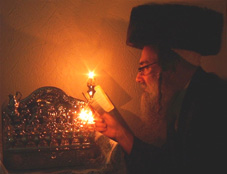 Since the miracle of Chanukah specifically involved the Menorah, one can suggest that the two subjects share certain similarities of meaning. The Menorah’s message of unity suggests that Chanukah, too, possesses a universal dimension. The Chanukah lamps we place in our doorways or upon our windowsills have a cosmic effect. In the words of the Sfas Emes:
Since the miracle of Chanukah specifically involved the Menorah, one can suggest that the two subjects share certain similarities of meaning. The Menorah’s message of unity suggests that Chanukah, too, possesses a universal dimension. The Chanukah lamps we place in our doorways or upon our windowsills have a cosmic effect. In the words of the Sfas Emes:
Through the act of lighting the Menorah in the Beis Hamikdash, spiritual illumination shone forth to the entire world… This also takes place when we light the Chanukah candles. Then all creation is elevated to its source in the Divine Oneness (Sfas Emes, Chanukah 5632, Fifth Night).
At the same time, Chanukah exemplifies separateness. The flask of pure oil symbolizes the absolute anti-assimilation of the Torah and Israel. We are “a people that dwells alone and shall not be reckoned among the nations” (Bamidbar 23, 9). That is, just as oil does not mix with water, Israel does not mix with other nations or belief systems. The seal of the Kohen Gadol upon each flask of oil also indicates separatism and kedushah (holiness). The Maccabees were waging a war not only against a foreign conqueror, but also against cultural assimilation. Indeed, the first act of the Maccabean uprising was the striking down of a Hellenized Jew publicly engaged in idolatry. The Maccabees were kana’im, uncompromising zealots.
Their refusal to compromise was an expression of their dedication to the truth. This, too, is symbolized by the Menorah. The seven branches of the Menorah represent diverse points of view, but this is a diversity that springs forth from the common ground of truth. Rabbi Nosson Sternhartz observes:
The Menorah was absolutely one, all of a piece, because truth is one. Although ornamented with numerous buds, flowers, and cups,the entire object was formed from a single piece of gold. By analogy, from the core of truth emerge the Torah and mitzvot as well as all the worlds, both spiritual and physical,which possess colors and variations beyond number; nevertheless, in their source, all things are absolutely one… The Menorah was one because the diversity of existence is one. This is the essence of truth, which is one (Likkutei Halachos, Yoreh Deah, Beheima VChaya Tehora 4:30).
Truth is not a construct but a simple unity, reflecting the simple Oneness of the Creator.
Unity As a Construct
Among the Hellenists there were those who sought unity and peace, but on very different terms. They wished to put the broken pieces of the world back together, but lacked a basis for spiritual discrimination. Their premise was that “everything is the same”; all religions are of equal value because they all attest to the greatness of human creativity. (Thus, their deities were typically conceived as humans.) According to these philosophers, unity is a construct: a sort of metaphysical Library of Congress in which it is forbidden to raise one’s voice by making any claim to absolute truth. Moral relativism is one of the articles of faith of contemporary “Hellenists,” as well.
The question is: how is unity possible when, in one way or another, divergent views are inevitably mutually exclusive? At best, one can find some common denominator and strike a compromise. But true unity is not attained this way. Such a strategy is like the bed of Sodom described by Chazal: if a person was too tall, the townspeople cut off his feet; if he was too short, they stretched him to size (Sanhedrin 109b). By contrast, Chanukah teaches us that true unity cannot be imposed from without, but is an expression of the hidden essence of things. This unity can be reached only through fidelity to the Divine element that must be sought within.
Seeing The Light
The true solution to the challenges of pluralism and the diversity of human attitudes and views cannot come about through human intellect, but through Divine wisdom: the light of the Menorah. We can kindle that fight by remaining steadfast in our devotion to everything the Menorah represents. This will bring about not only Jewish unity, but the unity of all creation.
During the Hellenist period, too, a man-made vision of unity stood in contrast to the Divine unity of the Menorah. Ironically, it was the anti-assimilationist Maccabees who brought about the re-dedication of the “House of Prayer for all nations” (Yeshayahu 56,7).
More than two thousand years later, the Chanukah lamp remains a living symbol of Israel’s path and goal. It teaches us that maintaining our religious integrity is neither narrow-minded nor intolerant, but an act of love both of Hashem and of our fellow Jews. Although this posture may at times appear to be self-centered, it is actually the opposite; for this path alone leads to the ultimate unity that will shine forth from the Menorah in the Third Beis Hamikdash, may it be rebuilt speedily in our days.
***
Our thanks to The Breslov Center for this wonderful article, which was first published in The Jewish Observer, Kislev 5758 [1998]

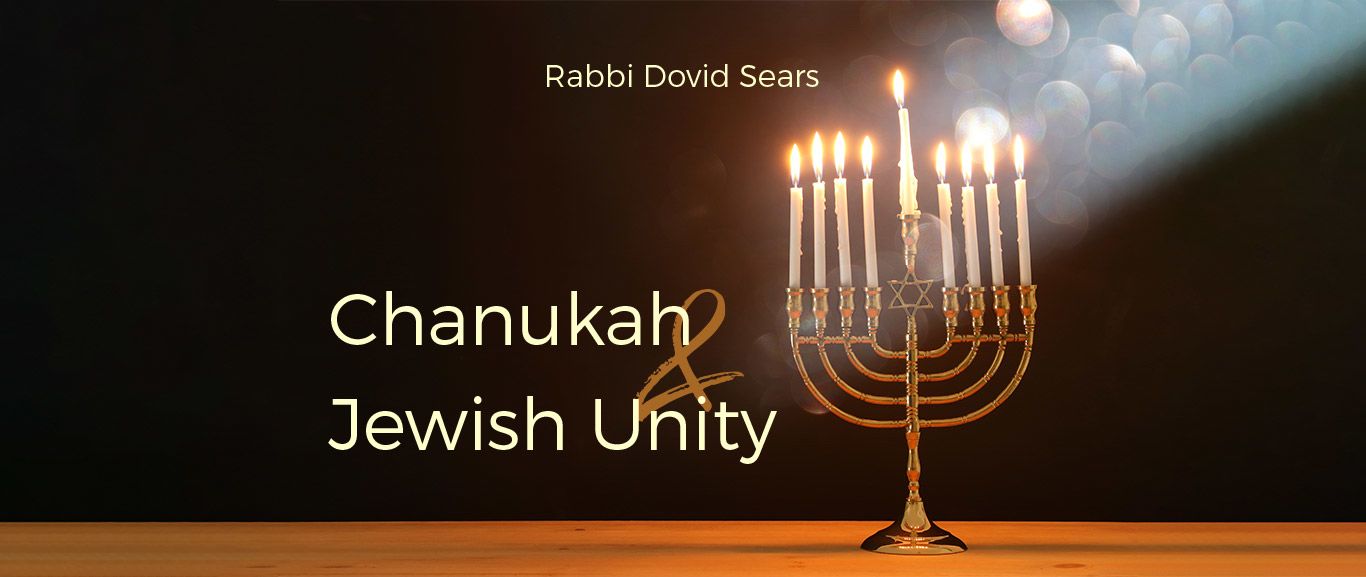
 Since the miracle of Chanukah specifically involved the Menorah, one can suggest that the two subjects share certain similarities of meaning. The Menorah’s message of unity suggests that Chanukah, too, possesses a universal dimension. The Chanukah lamps we place in our doorways or upon our windowsills have a cosmic effect. In the words of the Sfas Emes:
Since the miracle of Chanukah specifically involved the Menorah, one can suggest that the two subjects share certain similarities of meaning. The Menorah’s message of unity suggests that Chanukah, too, possesses a universal dimension. The Chanukah lamps we place in our doorways or upon our windowsills have a cosmic effect. In the words of the Sfas Emes: 

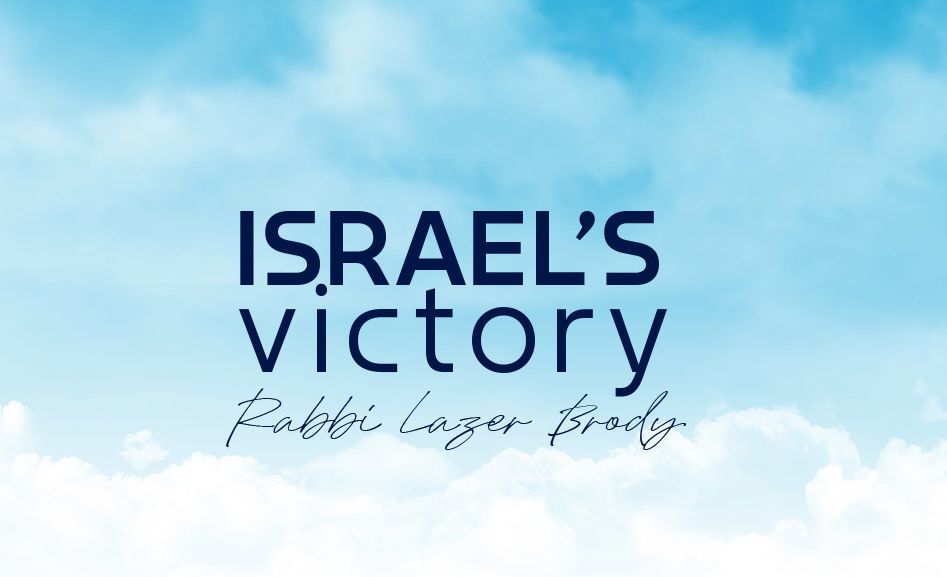
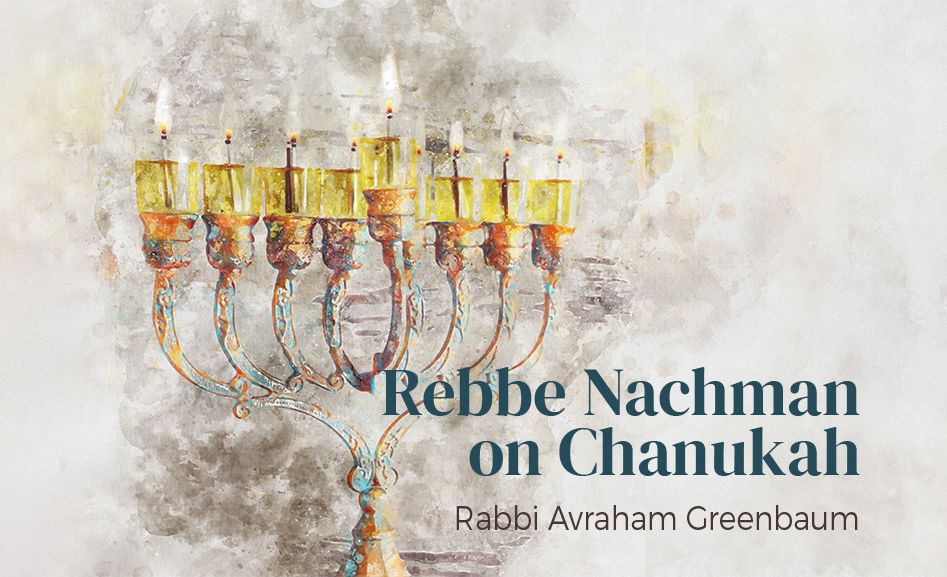
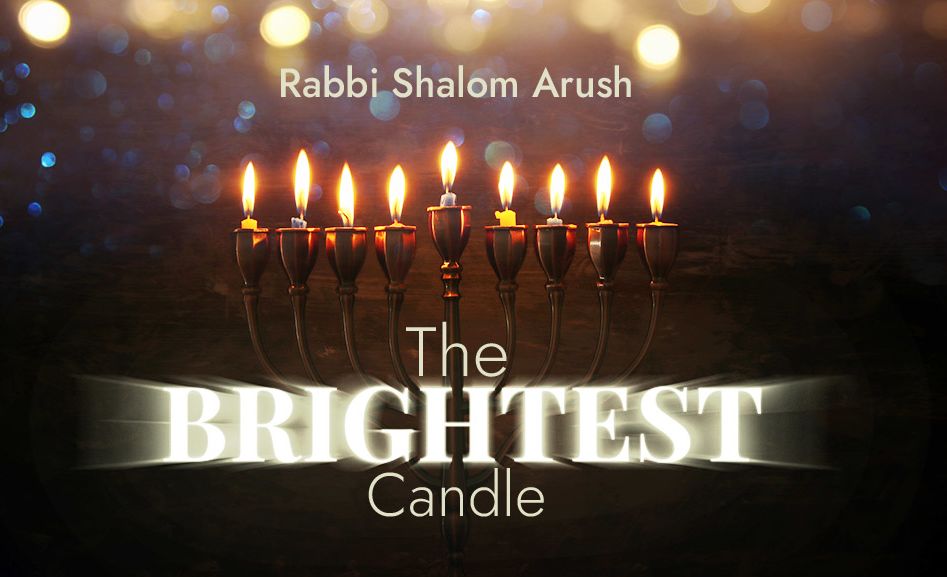

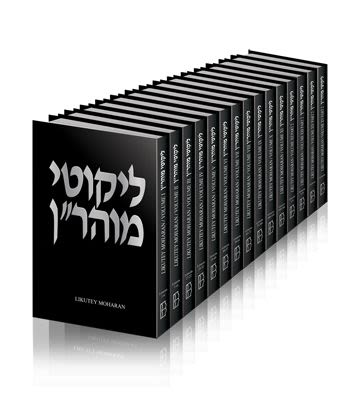

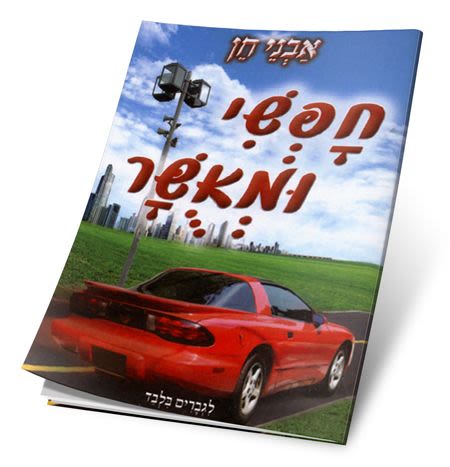
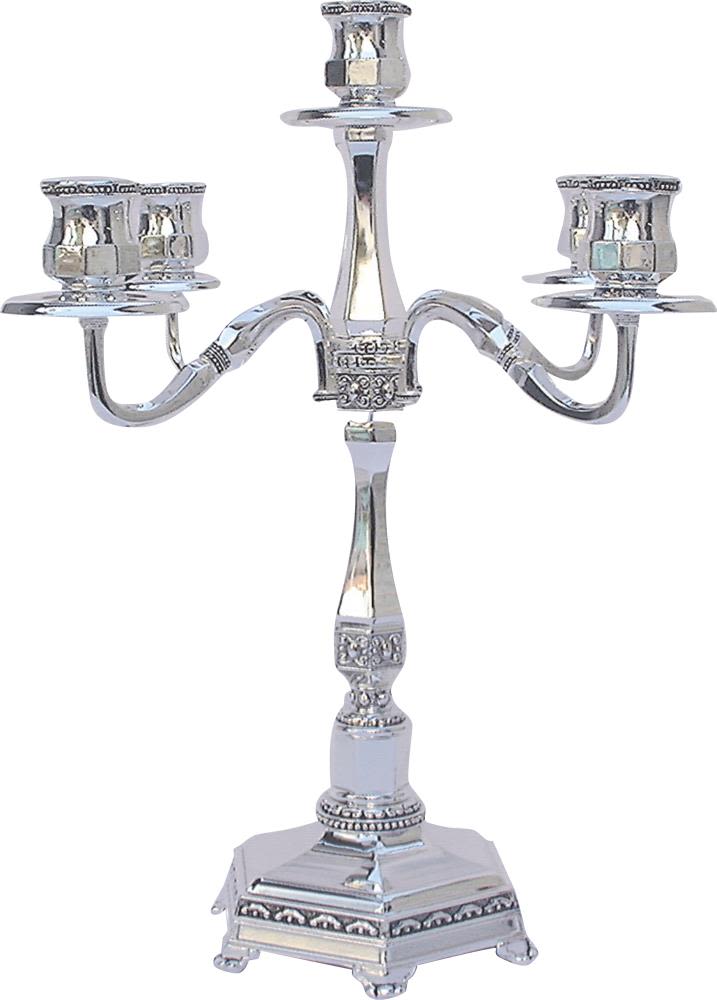

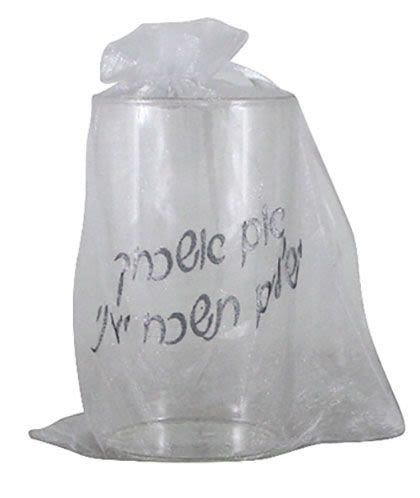
12/23/2008
Chanukah I liked this article.It explains why the jewish people exist and why the jewish people are a special people under the nations.We should always remember what the Maccabees fought for and avoid assimilation
12/23/2008
I liked this article.It explains why the jewish people exist and why the jewish people are a special people under the nations.We should always remember what the Maccabees fought for and avoid assimilation